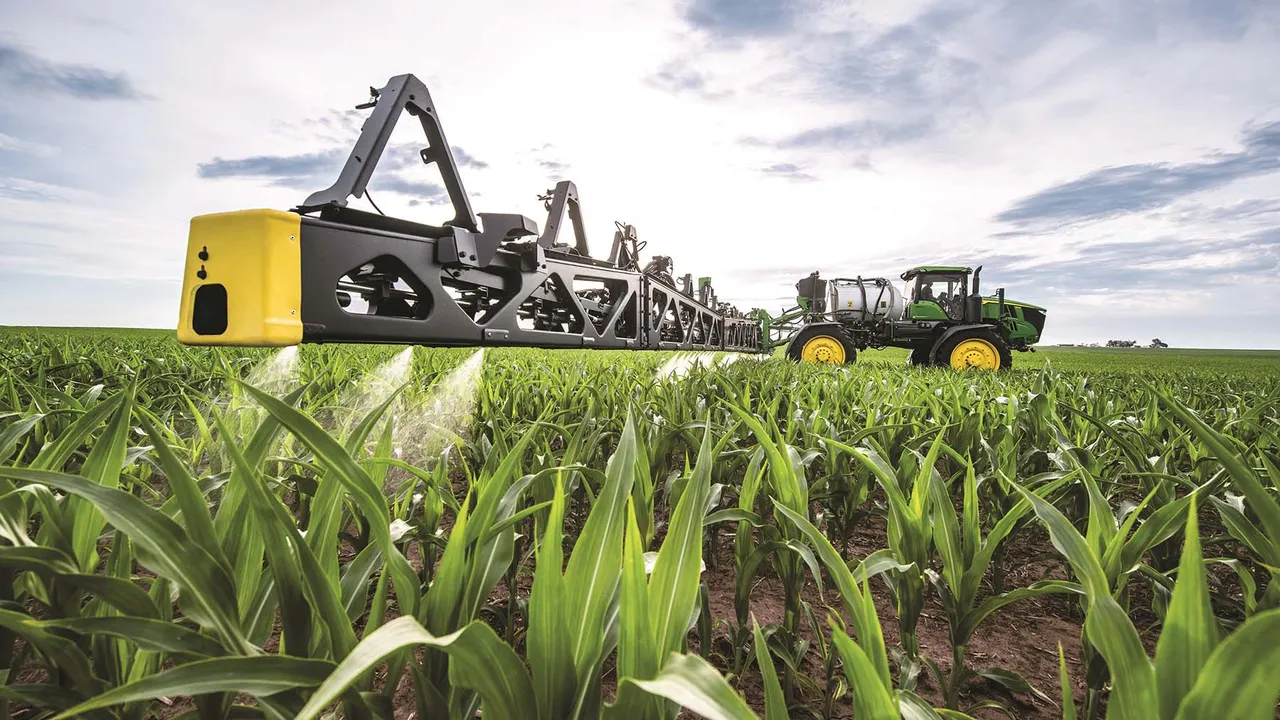John Deere’s See & Spray technology reached a major milestone as producers used it across more than 5 million acres during 2025’s growing season. According to reporting from High Plains Journal, the system has shifted from an emerging innovation to a large-scale tool with proven results for herbicide savings, yield protection, and overall efficiency. The rapid growth shows how quickly farmers are embracing targeted spraying as a practical way to cut input costs while maintaining strong weed control.
How the Technology Reached This Scale
See & Spray has matured quickly since its launch in 2021. The system mounts cameras and processors along the boom and scans the field at high speed, identifying weeds and activating nozzles only where spray is needed. High Plains Journal notes that the technology cut non-residual herbicide use by nearly 50 percent among customers using it in 2025. When applied across millions of acres, the savings were dramatic. Deere estimates that farmers saved roughly 31 million gallons of herbicide mix by switching from broadcast spraying to targeted application.
The adoption surge was also driven by strong field results. Trials in seven states showed an average yield increase of around two bushels per acre compared to traditional broadcast spraying, with some trials climbing to nearly five bushels per acre. For many growers, that combination of input reduction and yield improvement created a compelling financial incentive. Deere also lowered the risk barrier by tying the cost of the system to the savings achieved. If a grower does not save money, the per acre fee does not apply. This helped many hesitant producers take the next step into precision application.
Why the Savings Matter
Herbicides remain a significant expense for row crop growers, especially in seasons with difficult weed pressure. The ability to spray only what is needed, when it is needed, allows producers to regain control of input spending at a time when margins remain tight. Cutting herbicide use nearly in half is not simply a cost reduction. It can also mean fewer mixing trips, less time spent hauling water, and less fuel burned over the course of a season.
Yield protection was another reason the system gained such strong support. Targeted spraying reduces the chance of crop injury and limits drift, which helps plants maintain vigor throughout the season. The small but consistent yield gains reported in Deere’s trials show that precision spraying does more than reduce expenses. It can slightly improve final production as well.
Additional Advantages for Growers
High Plains Journal highlights several upgrades that added momentum this year. Deere expanded See & Spray’s capabilities to support above-canopy spraying, allowing the system to target late-season escapes. It also improved performance at higher speeds and widened its compatibility with different corn row spacings. Many growers liked the fact that the technology can be retrofitted onto several model years of R Series and 400 and 600 Series sprayers, which meant they did not need to purchase a brand new machine to benefit from it.
These improvements created a smoother path to adoption, allowing producers to integrate the technology into their existing fleet and management practices. Combined with the financial guarantees and strong field results, See & Spray reached a level of scale that signals lasting change in how herbicide application is managed.
What This Means for the Future
Crossing the 5 million acre mark shows that targeted spraying is becoming a standard tool rather than a niche product. As more growers adopt the system, Deere can continue refining its algorithms, camera performance, and compatibility. Farmers will gain more data on how it performs in their own fields, under their own weed pressure, and in different growing conditions across the country.
See & Spray has moved into a new stage of maturity. It is delivering measurable reductions in inputs, offering modest improvements in yield, and helping farmers meet the rising expectations around environmental stewardship. For producers examining their input costs or looking for technology that can deliver immediate and practical returns, this year’s adoption numbers show that targeted spraying has arrived as a proven solution.


Leave a Reply